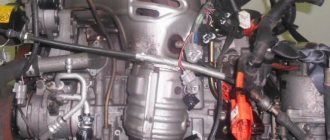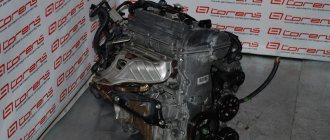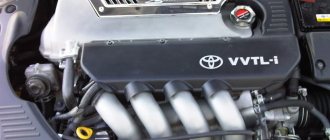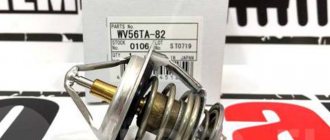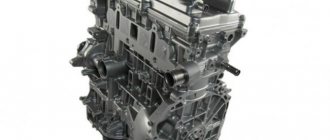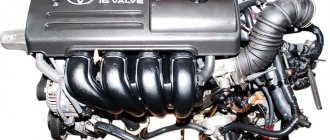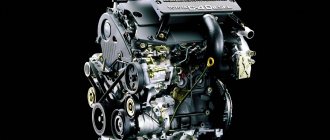It’s good to have a car with an engine that is excellent in all respects and does not have any problems or malfunctions. To a greater or lesser extent, speaking about an excellent engine, you need to compare car engines throughout their entire life cycle. In terms of service life, it goes without saying that there are differences between different brands and series of engines. After the end of its service life, the cost of repairing the motor also differs. Future Toyota owners need to think carefully about all possible problems and costs associated with operation, maintenance and repair of the engine. So, what shortcomings and weaknesses are there on the 2AZ-FE ? This is what we will talk about.
Toyota cars were produced with the 2AZ-FE engine:
- Toyota Camry (2002—2011);
- Pontiac Vibe (2009-2010);
- Toyota Camry Solara (2002-2008);
- Toyota RAV4 (2004—2007);
- Toyota Highlander/Kluger/Harrier (2001-2007);
- Toyota Estima/Toyota Ipsum/Toyota Previa/Toyota Tarago;
- Toyota Alphard;
- Toyota Blade;
- Toyota Avensis;
- Toyota Sion TC (2005—2010);
- Toyota Sion XB (2008—2015);
- Toyota Mark X Zio (2007—2013).
Overhaul of Toyota Camry 2.4 engine
AZ engines and their variants are manufactured by Toyota Motor Corporation. The series has several modifications, one of which, 2 AZ-FE with a volume of 2.4 liters, has been installed on Toyota Camry cars since 2002.
Design features and disadvantages
1. Fuel injection scheme of the classic distributed type. Under operating conditions at low temperatures or low engine speeds, fuel is supplied in pairwise injection mode. Under standard operating conditions, a sequential injection scheme is used.
2. The fuel system is of a conventional type, has a pressure regulator built into the pump housing. The fuel manifold is made of aluminum and has a pressure fluctuation damper installed on it.
3. The engine oil supply pump is driven using an additional chain from the crankshaft. This system improves the pumping of the oil mixture during engine operation at low temperatures. The downside of the system is a larger number of moving elements that require additional attention.
4. Aluminum block of the cylinder-piston system with cast iron liners built into it. Aluminum parts reduce the weight of the mechanism, but make it vulnerable to deformation. When carrying out a major overhaul of the Camry 2.4 engine, it is necessary to replace the liners.
5. Self-destruction of the cylinder head fastening system is another drawback of this type of engine. The cylinder head becomes deformed during operation. As a result, the mounting bolts come out of the socket under pressure, stripping the threads. During repair work it is necessary to renew it or replace damaged elements of the piston system. The cause of the “sore” was a manufacturing defect, which the Toyota concern later admitted and partially eliminated.
6. Another weak point of the Toyota Camry is the gears made of polymer material. The goal was the manufacturer’s desire to reduce noise during vehicle operation. The result was an increased risk of failure due to low strength.
Signs of a car malfunction
Toyota Camry, like any car, can fail due to certain operating conditions. However, there are a number of model-specific faults that appear most often.
The following factors indicate the need for overhaul: - the engine is difficult to start; — power drops in transient mode; — increased engine oil consumption; — coolant is leaking; — the geometry of the cylinder head mating plane is broken; — the engine runs intermittently, including at idle; — the intake manifold produces uncharacteristic noises; — the motor overheats.
Overhaul of 2AZ-FE 2.4 l series engines
A typical problem with engines of this type is failure of the cylinder head mounting bolts. This is what most often leads to the need for major repairs.
In 2007, Toyota admitted the mistake and during modifications, the thread length was increased. This did not completely solve the problem, but it reduced the risk of breakdown.
There are two ways to troubleshoot the problem.
1. Replace the cylinder block. This method is recommended by the manufacturer.
2. Update the thread (plus make it larger) and use a threaded bushing. This option is most often used in practice, especially for cars whose warranty has expired. Later, the manufacturer recognized the need for such measures and even recommended a certain repair kit with bushings to eliminate the problem in non-warranty vehicles.
You can repair the Toyota Camry engine in several stages:
1. Diagnostics and initial examination are carried out. 2. The engine is not completely disassembled. 3. Engine oil is drained. 4. The engine is thoroughly disassembled. 5. The mechanism parts are cleaned of any leaks of mixed oil and coolant. 6. Failed parts are replaced and/or threads on broken bolts are renewed. 7. The engine is being assembled. Includes: installation of the cylinder head, tightening the mounting bolts, installation of camshafts, timing belt, etc. 8. A control launch of the mechanism is carried out and its functioning is checked.
There are several more characteristic model problems.
1. Atypical noise from the intake manifold at idle speed. The problem is typical for cars from early years of production. The solution is to replace the collector with an updated model.
2. The occurrence of a leak (as well as extraneous noise) in the coolant pump during operation. The solution to the problem is to replace the pump.
3. Excessive oil consumption. The problem arises either with the age of the car (especially noticeable with increasing loads), or in models of recent years of production. Excessive oil consumption leads to a classic problem - intense carbon formation in the engine compartment. In this case, repair work is carried out in order to replace failed elements and clean the engine from the resulting carbon deposits. Most often, spark plugs, piston rings, and valve stem seals need to be replaced.
Engine diagnostics and repairs should be carried out in a trusted workshop
, in which they will adequately
calculate the cost of repairs
and perform the work to the highest possible quality.
And finding a car service center nearby
is not difficult these days.
It is not recommended to carry out work on your own, since replacing (checking) complex mechanism components requires strict adherence to technology and experience in this field. An incorrectly fitted bushing or poorly cleaned carbon deposits can lead to damage that is more serious than the original one. And to an increase in the cost of repairs.
Toyota Camry engine repair in Balashikha
Engine repair prices
| Service | Price | |
| Replacement of gasoline engines | from 18 920₽ | |
| Replacing the engine cooling fan | from 1 520₽ | |
| Replacing crankshaft bearings | from 2 250₽ | |
| Replacing the cylinder head | from 10 460₽ | |
| Replacing automatic transmission hydraulic compensators | from 12 000₽ | |
| Replacing the crankshaft sensor | from 1 190₽ | |
| Engine replacement | from 11 760₽ | |
| Replacing the rear engine mount | from 1 880₽ | |
| Engine mount replacement and repair | from 1 280₽ | |
| Replacing valves | from 3 940₽ | |
| Replacing the engine compressor | from 16 600₽ | |
| Replacing the left engine mount | from 1 200₽ | |
| Replacing the lambda probe | from 750₽ | |
| Replacing valve stem seals | from 13 550₽ | |
| Replacing the oil pump | from 7 450₽ | |
| Replacing the oil pan | from 4 310₽ | |
| Replacing the front engine mount | from 2 000₽ | |
| Replacing piston rings | from 13 070₽ | |
| Replacing the right engine mount | from 2 920₽ | |
| Replacing drive belts | from 2 250₽ | |
| Replacing the valve cover gasket | from 3 270₽ | |
| Replacing the oil pan gasket | from 4 500₽ | |
| Camshaft replacement | from 3 000₽ | |
| Replacing the crankshaft oil seal | from 4 700₽ | |
| Replacing camshaft seals | from 2 230₽ | |
| Replacing the thermostat | from 3 080₽ | |
| Turbine replacement | from 3 450₽ | |
| Replacing the crankshaft gear | from 900₽ | |
| Replacing the crankshaft pulley | from 1 320₽ | |
| Diesel engine compression measurement | from 1 340₽ | |
| Washing the engine cooling radiator | from 2 750₽ | |
| Engine valve adjustment | from 5 750₽ | |
| Flywheel repair and replacement | from 2 710₽ | |
| Engine mount repair and replacement | from 2 360₽ | |
| Repair and replacement of injectors | from 3 750₽ | |
| Repair of turbines of gasoline and diesel engines | from 3 150₽ | |
| Removing and installing the engine cylinder head | from 8 030₽ | |
| 320 320 | ||
| Installing crankcase protection | from 320₽ | |
| The total cost: | 0 rub. | |
Toyota engine repair price:
40% cheaper than the dealer! Standard hour cost: 1500 rubles ; On your first visit: 1275 rubles (15% discount): With a car club card: 1200 rubles (20% discount)
| № | Toyota engine repair work | Number of standard hours | Total cost. (rub.) |
| 1 | Overhaul of Toyota gasoline engine | 20 – 50 | 24000 – 75000 |
| 2 | Toyota injector flushing | 1 – 2 | 1200 – 3000 |
| 3 | Cleaning Toyota injectors | 0,3 – 1,5 | 360 – 2250 |
| 4 | Toyota turbine repair | 2 – 15 | 2400 – 22500 |
| 5 | Toyota compressor repair | 1 – 6 | 1200 – 9000 |
| 6 | Toyota cylinder head repair | 3 – 9 | 3600 – 13500 |
| 7 | Toyota cylinder head gasket replacement | 2 – 5 | 2400 – 7500 |
| 8 | Toyota engine mount replacement | 0,5 – 4 | 600 – 6000 |
| 9 | Replacing the fuel pump | 1 – 3 | 1200 – 4500 |
| 10 | Toyota oil pump replacement | 1 – 2 | 1200 – 3000 |
| 11 | Adjustment of valves | 1 – 3 | 1200 – 4500 |
| 12 | Toyota valve cover gasket replacement | 1 – 3 | 1200 – 4500 |
| 13 | Compression measurement | 1 – 2 | 1200 – 3000 |
| 14 | Replacing valve stem seals | 3 – 15 | 3600 – 22500 |
| 15 | Replacing the pan gasket | 1 – 4 | 1200 – 6000 |
| 16 | Effective injector repair | 1 – 5 | 1200 – 7500 |
| 17 | Repair of cylinder-piston group | 5 – 10 | 6000 – 15000 |
| 18 | Honing Toyota cylinder block | 1 – 5 | 1200 – 7500 |
| 19 | Flushing the cooling system | 1 – 3 | 1500 – 4500 |
| 20 | Replacing the timing belt and chain | 2 – 8 | 2400 – 12000 |
| 21 | Replacing the drive belt tensioner roller | 1 – 3 | 1200 – 4500 |
When to repair a Toyota Camry engine
ICE malfunctions can manifest themselves in different ways, depending on which engine element has failed. But the main signs of failure are:
- high engine oil consumption;
- high fuel consumption;
- difficulties when starting the internal combustion engine;
- carbon deposits on spark plugs;
- uneven operation of the engine at idle;
- drop in engine power;
- motor overheating;
- extraneous noises and knocks while driving;
- interruptions in the operation of the internal combustion engine;
- unpleasant smell in the cabin;
- smoky exhaust.
Signs of the need for diagnostics and overhaul
If these problems are detected, you should immediately go for diagnostics, because with each kilometer passed the situation will only get worse.
- Significant excess consumption of engine oil.
- Problems starting the engine, intermittent operation.
- Reduced maximum power.
- Overheating, leaks of coolant or other liquid.
- Uncharacteristic noises.
Contact Vilgud specialists
It is very difficult to determine the cause of engine problems on your own, and it is better to take the car to a service center where specialists will take care of it. For example, diagnostics and repair of the Toyota Camry engine in Balashikha are performed by Vilgud technical centers. The network has service centers in every district of the city, so getting to the nearest one will take you no more than 20 minutes.
All Vilgud car services in Balashikha are equipped with computer diagnostic equipment, which allows specialists from technical centers to accurately identify the smallest faults. Toyota Camry cars have standard sensors, so the possibility of errors when assessing the condition of the internal combustion engine using computer diagnostic tools is completely excluded.
Service center employees have all the tools necessary for work, and spare parts for replacement are always available. Thanks to this, repairing your car's engine usually takes no more than two to three hours.
Vilgud car services offer a competitive price for engine repairs in Balashikha and a guarantee for all work performed!
Features of Toyota engine repair
Auto repair shop specialists work strictly according to recommendations, taking into account all accepted technological standards. They carry out visual inspections, conduct computer diagnostics, and perform repairs:
Also in the range of their responsibilities are measuring oil pressure, compression, engine reprogramming and replacement:
- crankshaft;
- oils;
- piston rings;
- valves;
- sealing gaskets.
From us you can order both local internal combustion engine repairs and major repairs. Quality control at each stage allows you to remain confident that all restoration procedures were successful, faults and defects were eliminated. Clients receive full guarantees, without unclear reservations and conditions.
Our workshop is excellently equipped, so restoration work is carried out quickly and accurately. We also note that you can buy the consumables and parts repairing a Toyota
Engine capital 2AZ-FE Toyota Camry in 40 body, 2006.
On September 7, another patient arrived at the capital in the person of a Camry in the 40 body of 2006. with 2AZ-FE engine. The owner complained about the oil consumption, about 1 liter per 1000 km, but for myself I noted that the engine was not very diesel.
So let's get started. Drain the liquids.
We disconnect all the pipes and wiring, unscrew the air conditioning compressor from the engine, tie it to the body and remove the motor from the body. The air conditioning compressor remains hanging tied to the body, which allows you to leave the system charged and avoid additional costs for refilling the air conditioner upon completion of the repair.
As it turned out later, the valve stem seals were replaced and the windshield was glued incorrectly. This is the result of an unqualified repair. In addition, the MSCs were swapped in places, i.e. the outlets stood in the place of the inlets, and the inlets in the place of the outlets, respectively.
We bring the motor back to normal so that you can work with it.
During the process of dismantling the attachment, an antifreeze leak is discovered from under the fitting from the block. Then during assembly we will repair it.
Unscrewing the bolts and nuts is not an interesting process and I move straight to a photo shoot of the internal state of the engine
There was a surprise with the oil scraper rings. It feels like it was specially made so that the rings lay down as quickly as possible
The cleaned piston shows the pitiful diameter of the oil drain holes.
We wash the head with the block and all the small things clean.
At the same time, we put the valves in order. Clean, polish.
Since the threads on some bolts were pulled, we take the fittings and tighten the block so that the head is attracted to the block as it should be.
I send the head for grinding, and the block for sleeves with my own sleeves
After receiving a polished head to 0.06 and a sleeved block, we begin assembly. Don't forget about the leaking fitting.
A few questions to the author of the topic: 1. What oil did the engine run on, what is its mileage? 2. For what reason was the engine liner made? Those. not just replacing the piston rings with standard ones? 3. How was it determined that it was necessary to pound the block? That is, how was the thread tension in the block measured?
A few questions to the author of the topic: 1. What oil did the engine run on, what is its mileage? 2. For what reason was the engine liner made? Those. not just replacing the piston rings with standard ones? 3. How was it determined that it was necessary to pound the block? That is, how was the thread tension in the block measured?
I don’t know what kind of oil the car was running on, this question is probably better for the owner. I think it will appear soon, the liners were produced, 1st 13 hundred parts, 2nd 11 hundred parts, 3rd 8 hundred parts, 4th 6 hundred parts, well, the futorki is reinsurance, so there were a couple of cases where after some time the bolts pulled out
Last edited by Dimasfen; 09.23.2013 at 14:12.
Thank you, clear. What's the mileage on the car? And on engines of what years are there known cases of bolts being pulled out? (there is an opinion that this problem was observed on pre-restyling ACV30 engines, and then the thread length was changed and the problem supposedly went away)
This one has a mileage of 250 thousand, I think at the factory the engine life has already been specially underestimated, judging by the oil scraper rings and oil drain holes, with my head up I was in my thirties and five years old,
A few more photos know comments not included in the report above.
Last edited by Dimasfen; 09.24.2013 at 22:04.
they finally helped me post the video
Now I am repairing another AZ, the man was serviced by network specialists, the oil was changed on time and only TOYOTA, now he is in shock
Our offs use Castrol, but it doesn’t look like Castrol, there is no characteristic brown coating. It looks like there is no Castrol in Toyota cans. A dozen years or less ago there was information that Toyota had an agreement with Esso and Shell, but now I don’t know.
What I wanted to put in, I was tired of peeling off the valves
I always said that the oil filter is the liver of the car, the person installed it looks like a counterfeit one. Something inside fell apart and blocked the oil channel, see the timing. On the third cylinder in the connecting rod the liners (dissolved)
Miniatures
Most Common AZ Engine Problems
Almost all Carmi have one of the versions of the AZ gasoline engine installed: 1AZ-FE, 1AZ-FSE, 2AZ-FE, 2AZ-FSE, 2AZ-FXE. They replaced the S-series engines in 2001 and are still relevant today. Here is a list of the most common problems with these models:
- Destruction of cylinder block fastenings. This occurs due to deformation of the structure and breakage of bolts. Most often, such a breakdown occurs on models manufactured before 2007. It can be corrected by updating the fasteners or the piston system itself.
- Partial or complete failure of the coolant supply pump. As a result, the motor begins to overheat, a leak forms under it, and strange sounds occur. Most often it can only be corrected by replacing the pump.
- Malfunction of the oil supply pump drive. The Camry has an effective oil pumping system, but it has a significant drawback - there are too many moving elements, which often fail due to poor maintenance. The repair is carried out in two stages: cleaning the engine compartment from carbon deposits and replacing damaged elements: spark plugs, piston rings, caps, etc.
Toyota engine diagnostic methods
Modern car repair shops use various methods for diagnosing problems associated with engine malfunctions, the main of which are:
- computer method, determination of compression in cylinders and the chemical composition of the fuel used;
- visual method - a kind of endoscopy, includes analysis of the operation of the connecting rod and piston system;
- reconciliation with recommended data on pressure in lubrication and fuel systems, study of the condition of fuel and oil pumps;
- evaluation of cylinder block performance.
Do-it-yourself overhaul
Do not attempt major engine repair work unless you have sufficient experience and knowledge. “Handicraft” repairs cause breakdowns that lead to accidents.
It is impossible to describe all types of breakdowns and methods of repairing them in one article. This text provides useful tips, tricks for car enthusiasts and universal instructions that make DIY repairs easier.
- First, you should find a repair manual for your engine model. It will be very helpful as it will provide all the necessary information.
- Also, before repairs, it is necessary to drain the engine oil and antifreeze, disconnect the pipes, wiring, and compressor.
- The engine is removed from the body, the attached parts are removed.
- To inspect and troubleshoot, all elements must be thoroughly cleaned of dust, dirt, carbon deposits, and smudges.
- The system is completely disassembled, nuts and bolts are removed, and each element is disconnected.
- Now, depending on the type of breakdown, failed parts are renewed (shafts, pistons, liners, bearings, boots, gaskets, caps), chains are tightened, bolts are replaced, the cylinder block is bored and lined, and other work is carried out.
- The engine is reassembled: the cylinder head, timing belt, camshafts, pistons, pipes, finished cylinder head, attachments are installed, all chains and bolts are secured.
- The motor is immersed in the body, pipes and wiring are connected.
- A control start of the engine is carried out.
To better understand the process, watch a video that shows each step with comments from the owner: https://www.youtube.com/watch?time_continue=20&v=zVKO4qPVMt0
Toyota Camry engine repair and maintenance (Toyota Camry)
Free check using 54 parameters
1 year warranty on repairs
Every driver dreams of his car driving like new for a long time after purchase. But this is not always possible due to engine problems. What to do if the Toyota Camry engine did not meet your expectations and unwanted damage or extraneous sounds appeared? Try to contact our service department immediately, don’t delay, engine failure requires immediate repair. After all, at an early stage, you can eliminate the malfunction faster.
Stages of turnkey Toyota Camry engine repair
- Visual inspection of the engine, as well as its diagnostics using a special computer stand
- Classification of breakdown, its nature and complexity of solution
- Search for the most optimal solutions
- Dismantling and disassembling the power unit
- Repair or replacement of failed elements
- Motor assembly and installation
- Functionality check (multiple levels)
All identified problems must be corrected under appropriate conditions:
| Professional tools | Original spare parts |
| We provide estimates for spare parts and labor | Experts have more than 10 years of experience |
Repair work
As a result of such comprehensive diagnostics, specialists receive a complete picture of the processes occurring in the engine, on the basis of which they make a decision on the need to carry out certain work. If the engine operates with minor deviations and its repair would be clearly an unnecessary procedure, the engine is overhauled to replace worn parts and carry out general cleaning. In the case where repair is an inevitable procedure, depending on the complexity, three types are distinguished:
- Scheduled engine repair is the simplest and least expensive type of repair. When it is carried out, some engine elements are replaced, their interaction is established and adjusted with each other;
- medium engine repair - sometimes includes partial disassembly of the engine to replace the necessary mechanisms and parts;
- Engine overhaul is the most expensive and complex type of repair, requiring high skill and specialized equipment. During such repairs, the engine leaves its normal place, undergoes complete disassembly and replacement of all parts and mechanisms that require it. Subsequently, it is reassembled, debugged and adjusted, in other words, the engine is brought into ideal condition corresponding to the new motor.
Additional repair services for Toyota Camry:
| Engine diagnostics | Grinding the crankshaft | Adjustment of valves |
| Engine overhaul | Cylinder block boring | Connecting rod repair |
| Removing and installing the engine | Replacing hydraulic compensators | Changing the engine oil |
| Replacing crankshaft seals | Replacing camshafts | Engine flushing |
| Cylinder head repair | Replacing the timing belt | Replacing the engine pump |
| Replacing the engine mount | Replacing the timing chain | Replacing an engine injector |
| Replacing the cylinder head gasket | Repressing pistons | Replacing the engine filter |
| Replacing the valve cover gasket | Block sleeve | Replacing glow plugs |
| Replacing the oil pan gasket | Replacing the oil pump | Engine replacement |
| Replacing the fuel pump | Replacing valve stem seals | Replacing the engine mount |
There were no problems with the engine other than oil consumption. At the beginning the problem was not a concern. But then I decided to seek advice.
After I visited 5 services, I realized that I would only stay at ICE Master for repairs. The guys explained everything very professionally. We prepared an estimate for all the work. They were allowed to be present during disassembly and repair.
I was pleased with the result! I recommend to everyone!
Duration: 5 days
Cost: 18,900 rub.
Overhaul of 3s-fe engine
When driving, extraneous noises were heard and a small knock appeared periodically. Changing the oil and gaskets did not help. Then I turned to the service experts. The problem is in the connecting rods.
I liked the approach of the guys from ICE Master. Everything was prepared quickly, I was pleased with the cost. We made an appointment for a specific day when the master was already waiting for me.
Sent photos of the process upon request! Nobody does this anymore! I was pleased with the result! The car even drives differently! Completely satisfied with the work!)
Duration: 4 days
Cost: 11,500 rub.
Hyundai Solaris. Maintenance 60,000 km
I am already servicing my third car. Maintenance 60,000 km. and repairs before winter.
Replacement of all filters, engine oil, antifreeze, complete change of automatic transmission oil, power steering oil, spark plugs. Replacement of stabilizer bushings and stabilizer struts, front ball arms.
As always, I am 100% satisfied with the work. I recommend to everyone!
Duration: 1 day
Cost: 7,500 rub.
There was a high oil consumption of 1 liter per 800 km. I decided to revive the engine.
The piston rings, connecting rod and main bearings, valve stem seals, all gaskets and seals, and a complete timing belt kit were replaced. During the assembly process, all internal engine elements were thoroughly cleaned of large layers of carbon deposits. The chassis was diagnosed and the steering tip was replaced.
The prices are great! I saw the entire renovation process with my own eyes. Everything is very carefully, just like yourself!
Duration: 4 days
Cost: 19,000 rub.
Repair of Japanese Toyota engines in Moscow
Toyota is the largest Japanese and ninth largest automobile manufacturing corporation in the world. Cars of this brand are the most popular Japanese cars in Russia. Their impeccable reputation is based on many characteristic ingredients. One of the basic advantages that a car enthusiast receives when purchasing a Toyota car is the engine, which is unsurpassed in build quality and level of performance. But for all his merits, he is not able to serve forever, especially in the specific conditions of Russian reality.
The above shortcomings will not cause much trouble with minimal attention to the operation of the engine and the entire car as a whole, as well as timely diagnosis of the engine when the first signs of abnormal operation appear, such as:
- “jerks” and “dips” during engine operation;
- unreasonable consumption of engine oil;
- clearly audible extraneous sounds when the engine is running, which were not previously observed.
Identifying these facts of engine malfunction at an early stage of development will help save a lot of time, money and effort. Therefore, as practice shows, in such cases it is necessary to diagnose the engine as soon as possible and localize the annoying malfunction.
| A small list of the work we do: | Prices |
| Replacing spark plugs for a gasoline engine | from 600 rub. |
| Changing the engine oil and oil filter | from 720 rub. |
| Replacing the air filter | from 300 rub. |
| Replacing the cabin filter | from 500 rub. |
| Replacing the fuel filter | from 500 rub. |
| Coolant replacement | from 700 rub. |
| Changing the oil and oil filter in the engine with flushing | from 1000 rub. |
| Replacing the diesel engine fuel filter | from 900 rub. |
| Replacing the fuel filter in the tank | from 1500 rub. |
| Diagnosis of extraneous engine noise | from 600 rub. |
| Computer diagnostics of a diesel engine | from 1000 rub. |
| Computer diagnostics of a gasoline engine | from 1000 rub. |
| Fuel system diagnostics | from 1000 rub. |
| Diagnostics of the fuel injection system | from 1000 rub. |
| Cooling system diagnostics | from 600 rub. |
| Replacing the timing belt of a gasoline engine without removing the internal combustion engine | from 4000 rub. |
| Replacing the timing chain of a gasoline engine without removing the internal combustion engine | from 5000 rub. |
| Replacing the timing chain of a diesel engine without removing the internal combustion engine | from 5500 rub. |
| Replacing the timing belt of a diesel engine without removing the internal combustion engine | from 4500 rub. |
| Replacing the drive belt | from 600 rub. |
| Replacing the timing chain tensioner | from 800 rub. |
| Replacing the engine - remove the engine / install the engine | from 9000 rub. |
| Replacing the engine - remove the engine | from 4500 rub. |
| Replacing the engine - install the engine | from 6500 rub. |
| Engine repair | from 12000 rub. |
| Engine overhaul | from 15000 rub. |
| Replacing the cylinder head (cylinder head) | from 5000 rub. |
| Replacing the cylinder head gasket (cylinder head) | from 5000 rub. |
| Replacing the camshaft oil seal | from 1000 rub. |
| Replacing the valve cover gasket | from 800 rub. |
| Replacing valve stem seals on a removed cylinder head | from 2200 rub. |
| Replacing intake valves | from 2300 rub. |
| Replacing exhaust valves | from 2300 rub. |
| Replacing valve guides | from 2700 rub. |
| Replacing the valve seat | from 2700 rub. |
| Crimping the cylinder head (cylinder head) | from 1000 rub. |
| Grinding the plane of the cylinder head (cylinder head) | from 1500 rub. |
| Replacing the front crankshaft oil seal | from 1000 rub. |
| Replacing the rear crankshaft oil seal with removing the gearbox | from 5000 rub. |
| Replacing spark plugs for a gasoline engine | from 600 rub. |
| Replacing the engine mount | from 1000 rub. |
| Replacing the intake manifold gasket | from 1000 rub. |
| Replacing the throttle valve | from 800 rub. |
| Replacing the exhaust manifold gasket | from 1500 rub. |
| Replacing a gasoline/diesel engine turbine | from 3000 rub. |
| Replacing the flywheel with removing the gearbox | from 4700 rub. |
| Replacement of two mass flywheels with removal of gearbox | from 6000 rub. |
| Replacing the engine cooling system water pump | from 1000 rub. |
| Replacing the engine cooling radiator | from 1500 rub. |
| Replacing the engine pan gasket | from 2000 rub. |
| Engine sump repair | from 1000 rub. |
| Repair of the cylinder head of a gasoline engine | from 2500 rub. |
| Repair of diesel engine cylinder head | from 2500 rub. |
| Injector flushing | from 1400 rub. |
| Flushing the throttle valve | from 1000 rub. |
| Replacing the air conditioner radiator | from 1000 rub. |
We repair the following Toyota Camry engine models
2014-N.V.
- 2.0 AT (149 hp), Automatic, 1998 cc, 149 hp
- 2.5 AT (181 hp), Automatic, 2494 cc, 181 hp
- 3.5 AT (249 hp), Automatic, 3456 cc, 249 hp
2011-2014
- Camry VII 2.0 i VVT-i (148 Hp), Automatic, 1998 cc, 148 hp.
- Camry VII 2.5 i VVT-i (181), Automatic, 2494 cc, 181 hp.
- Camry VII 3.5 i V6 VVT-i (277), Automatic, 3456 cc, 277 hp.
2006-2011
- Camry VI 2.4 i 16V VVT-i, Mechanical, 2366 cc, 167 hp
- Camry VI 2.4 i 16V VVT-i, Automatic, 2366 cc, 167 hp.
- Camry VI 3.5 i V6 VVT-i, Automatic, 3456 cc, 277 hp.
2006-2011
- Solara 2.4, Mechanical, 2362 cc, 159 hp
- Solara 3.3, Automatic, 2995 cc, 225 hp
- Solara 3.0, Automatic, 2995 cc, 203 hp.
2002-2006
- Camry V 2.4 16V, Mechanical, 2366 cc, 152 hp.
- Camry V 2.4 16V, Automatic, 2366 cc, 152 hp.
- Camry V 3.0 V6, Automatic, 2959 cc, 186 hp.
- Camry V 3.0 V6, Manual, 2959 cc, 186 hp.
1998-2002
- Solara 2.4 i 16V, Automatic, 2366 cc, 163 hp.
- Solara 3.0 i V6 24V, Automatic, 2959 cc, 188 hp.
- Solara 3.0 i V6 24V, Mechanical, 2959 cc, 188 hp
- Solara 3.3 V6, Automatic, 2166 cc, 136 hp.
- Solara 2.2 i 16V, Automatic, 2166 cc, 136 hp.
- Solara 2.2 i 16V, Mechanical, 2166 cc, 136 hp.
- Solara 2.4 i 16V, Mechanical, 2366 cc, 163 hp.
- Solara 3.3 V6, Mechanical, 2166 cc, 136 hp
1998-2002
- Solara Convertible 2.4 i 16V, Mechanical, 2366 cc, 163 hp
- Solara Convertible 3.0 i V6 24V, Mechanical, 2959 cc, 188 hp
- Solara Convertible 3.0 i V6 24V, Automatic, 2959 cc, 188 hp.
- Solara Convertible 2.4 i 16V, Automatic, 2366 cc, 163 hp.
1991-1996
- Camry III 2.2 (SXV10), Manual, 2166 cc, 136 hp.
- Camry III 2.2 (SXV10), Automatic, 2166 cc, 136 hp.
- Camry III 3.0 (VCV10), Automatic, 2959 cc, 188 hp.
- Camry III 3.0 (VCV10), Manual, 2959 cc, 188 hp.
1996-1996
- Camry IV 2.2 (SXV20), Manual, 2166 cc, 136 hp.
- Camry IV 2.2 (SXV20), Automatic, 2166 cc, 136 hp.
- Camry IV 3.0 24V (MCV20), Automatic, 2959 cc, 188 hp.
- Camry IV 3.0 24V (MCV20), Automatic, 2959 cc, 188 hp.
- Camry IV 3.0 24V (MCV20), Mechanical, 2959 cc, 188 hp.
1991-1996
- Wagon III 2.2 (SXV10), Mechanical, 2166 cc, 136 hp.
- Wagon III 3.0 (VCV10), Mechanical, 2959 cc, 188 hp
- Wagon III 3.0 (VCV10), Automatic, 2959 cc, 188 hp.
- Wagon III 2.2 (SXV10), Automatic, 2166 cc, 136 hp.

